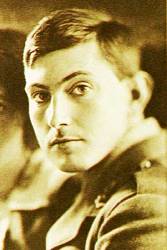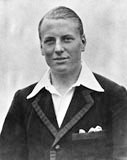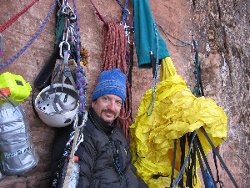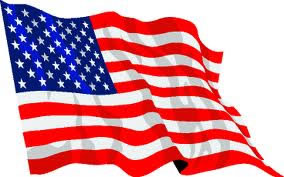
Left: George Mallory and Andrew Irvine © RGS/The Sandy Irvine Trust, from "Ghosts of Everest" ; Right: 1924 North Face locations © Pete
| Photoanalysis | Routes & Maps | Video & Books | Contact Me |


"I'm quite doubtful if I shall be fit enough. But again I wonder if the monsoon will give us a chance. I don't want to get caught, but our three-day scheme from the Chang La will give the monsoon a good chance. We shall be going up again the day after tomorrow. Six days to the top from this camp!"
--from George Mallory's last letter to his wife prior to disappearing on Mt. Everest with his partner Andrew "Sandy" Irvine in 1924
"My face is in perfect agony. Have prepared two oxygen apparatus for our start tomorrow morning".
- Sandy Irvine's last diary entry

About Me
 Celebrating my 50th birthday on pitch 3 of Prodigal
Son, Zion National Park, Utah (guided, all I did was jug up the ropes!)
Celebrating my 50th birthday on pitch 3 of Prodigal
Son, Zion National Park, Utah (guided, all I did was jug up the ropes!)
I am an Emeritus Professor of Chemistry at Western Oregon University where I taught for 31 years.

History of Mount Everest from 1903 - 1975 (copyright © 2005-2023)
Reference: "Everest" 3rd ed, by Walt Unsworth
Page 1 Page 2 Page 3 Page 4 Page 5 Page 6
1950: After a palace revolution in which the ruling Rana family are overthrown, Nepal opens up to the West, partially as a result of the Chinese takeover in Tibet. Foreign expeditions are allowed access to the southern side of Everest for the first time.
1950: Anglo-American Nepal Reconnaissance. Organized and led by the American Dr. Charles Houston and including Bill Tilman. The group enters the Solu Khumbu region - homeland of the Sherpas - and explores to the base of the Khumbu Icefall. Tilman concludes that the route up into the Western Cwm is not a viable one!
1951: Without official permission from Nepal, and only a few months after the 1950 Anglo-American Nepal Reconnaissance, the Dane Klavs Becker-Larsen attempts to climb the Northern pre-war Everest route but via a southern approach. With a party of Sherpa porters and guides, he attempts to enter Tibet via the Lho La, and actually climbs about halfway up before being turned back by rockfall and his lack of experience (it was the first time he had ever used an ice ax!). Undeterred, Larsen crosses the Nampa La instead and reaches the Rongbuk Monastery. Several days later Larsen and two Sherpas attempt to climb the North Col but turn back after yet more rockfall. Larsen wisely gives up the attempt and returns to Nepal.
1951: British Reconnaissance supported by the Alpine Club and the Royal Geographic Society. A post-monsoon exploration led by Eric Shipton with M.P. Ward, T. Bourdillon, W.H. Murray, and New Zealanders Edmund Hillary and H. Riddiford, the expedition was forced to contend with swollen streams, washed-out bridges, leeches, and reluctant porters. On the 22nd of September they reached Namche Bazaar, and three days later left with the objective of scaling the Khumbu Icefall and entering the Western Cwm. From a vantagepoint on the lower slopes of Pumori, they could see that the route up to the South Col looked feasible. Eventually the expedition pushed the route almost completely through to the top of the Icefall before retreating.
1952: Swiss Expeditions sponsored by the Swiss Foundation for Alpine Research
Spring Attempt: led by Dr. E. Wyss-Dunant with climbers G. Chevalley, R. Lambert, R. Dittert, L. Flory, R. Aubert, A. Roch, J. Asper, E. Hofstetter, and Tenzing Norgay as Sirdar. The party ascends the Geneva Spur and places Camp VI on the South Col. Camp VII is placed at approximately 27,500 feet (8382 meters) on the SE Ridge. After a miserable night without sleeping bags or a stove, Tenzing Norgay and Raymond Lambert make an attempt using oxygen but fail below the South Summit at an altitude of 28,210 feet (8595 meters), beating Norton's height record by only 84 feet (25 meters)!
Post-Monsoon Attempt: led by G. Chevalley with climbers R. Lambert, E. Reiss, J. Buzio, A. Spohel, G. Gross, N.G. Dyhrenfurth. The indomitable Tenzing returns again as expedition Sirdar. Instead of climbing the Geneva Spur, the route is pushed up the Lhotse Face instead, now the standard route. Unfortunately the expedition is fraught with bad luck and the Sherpa Mingma Dorje is killed on the Lhotse Face by falling ice, the first Everest fatality in twenty years since Maurice Wilson. Climbing along with the same party, incredibly a second rope slips on the ice and falls 600 feet (180 meters) to the bottom of the slope. Miraculously no one else is injured. A camp is established on the South Col, but the arrival of winter's bitter cold and fierce gales puts an end to the attempt. The expedition lays the groundwork for 1953.
1952: Rumors of a post-monsoon Russian attempt from the North led by Dr. Pawel Datschnolian, possibly with the hope of beating the Swiss to the top and scoring major propaganda points in an age of Sputnik. There are reports that this expedition left Moscow on October 16th and eventually placed Camp VII at 26,800 feet (8170 meters) before six climbers (including Datschnolian) simply disappeared. The Russians deny the expedition ever took place and the Chinese have never made any mention of it.

News
2019 Searches and Evidence that Irvine and the Camera Were Found by the Chinese in 1975?
 Along with Mark Synnott, Thom Pollard was part of the National Geographic 2019 search, as well as a member of the 1999 search that found Mallory's body. I recommend his Facebook page as well as his YouTube channel where he has been producing videos dealing with the new theories that are given below.
Along with Mark Synnott, Thom Pollard was part of the National Geographic 2019 search, as well as a member of the 1999 search that found Mallory's body. I recommend his Facebook page as well as his YouTube channel where he has been producing videos dealing with the new theories that are given below.
After his book "The Third Pole: Mystery, Obsession, and Death on Mount Everest" was published, Synnott uncovered resarch that seems to prove that Irvine and the camera were found by the Chinese back in 1975.
Let's not forget that Jake Norton was on a Discovery Channel search at the same time, but looking in a different place!
There were two films produced about these searches, and you can watch them here: Pollard/Synnott movie "Lost on Everest (Discovery+), and the Norton film Everest's Greatest Mystery (this is an Amazon Prime link, but the movie is available on AppleTV as well).
New Theories
 It has recently come to my attention the theories of Ajay Dandekar, a historian and a faculty member of Shiv Nadar University, Delhi. I find his theory that Irvine stayed behind in a sleeping bag while Mallory went to the summit to be highly questionable. Please see my two part series on why I think this is true: Part 1 and Part 2
It has recently come to my attention the theories of Ajay Dandekar, a historian and a faculty member of Shiv Nadar University, Delhi. I find his theory that Irvine stayed behind in a sleeping bag while Mallory went to the summit to be highly questionable. Please see my two part series on why I think this is true: Part 1 and Part 2
 He's been around for awhile, but you'll want to read Michael Tracy's thoughts of what happened to Mallory and Irvine, along with his repository of YouTube videos. He's very mercurial and you'll need a thick hide if you debate him!
He's been around for awhile, but you'll want to read Michael Tracy's thoughts of what happened to Mallory and Irvine, along with his repository of YouTube videos. He's very mercurial and you'll need a thick hide if you debate him!
New Mallory and Irvine Forum hosted by Jake Norton
 Please visit and become a member of Jake Norton's new Mallory and Irvine forum. You'll want to check out his image-based collection of all of the searches for Irvine from 1999 to 2019. He also has a three part series on his theory of what happened to Mallory and Irvine: part 1, part 2, part 3. And finally, here is the link to his Mallory and Irvine archive.
Please visit and become a member of Jake Norton's new Mallory and Irvine forum. You'll want to check out his image-based collection of all of the searches for Irvine from 1999 to 2019. He also has a three part series on his theory of what happened to Mallory and Irvine: part 1, part 2, part 3. And finally, here is the link to his Mallory and Irvine archive.

Articles and Editorials
A new article by researcher Wim Kohsiek, who has convincingly interpreted the time Mallory's watch was pointing to when it stopped, at odds with Jochen Hemmleb's interpretation that it was pointing to the time of Odell's sighting of the pair at 12:50 pm.
An interview with Graham Hoyland, author of the new book “Last Hours on Everest - The gripping story of Mallory and Irvine's fatal ascent”
Harvey V. Lankford, MD, has written a paper documenting the origin of the term "Glacier Lassitude" as a diagnosis for the debilitating effect of altitude as experienced by members of the early British Everest expeditions.
My new "what if?" theory about Mallory and Irvine's last climb, where I assume Odell's sighting was erroneous, and have them taking the Couloir route instead.
Part 1: the ascent
Part 2: the descent
Warwick Pryce is a new researcher who has arrived on the scene, and he has a new theory about how Andrew Irvine could have been the first person to stand on the top of the world.
Wim Kohsiek has a new interpretation of what Mallory's altimeter can tell us based on scientific applications of meterology.
Mallory and Irvine researcher Wim Kohsiek has two new thought-provoking articles about Mallory's watch and Irvine's location:
Mallory's Watch - Does it Really Point to 12:50 PM?
1924 Oxygen by Richard McQuet and Pete Poston
Why the Camera and Film are not Doomed to Destruction!
The Politics of Mallory and Irvine
Why Andrew Irvine Will Not be Found in a Sleeping Bag! Part 1 and Part 2
Chomolungma Nirvana: The Routes of Mount Everest
Rust Marks on Mallory's Altimeter
Little Known Free-Solo Ascent of the Second Step in 2001 by Theo Fritsche - I should never have written this - Anker and Houlding deserve credit for the first free ascent
Criticisms of the 2004 EverestNews.com search for Irvine --
The Mystery of Mallory and Irvine's Fate (with J. Hemmleb): Part 1, Part 2, Part 3, Part 4, Part 5.
Mallory and Irvine - Comments on the 'real Second Step' route: Part 1 and Part 2
Conrad Anker's comments on the unlikeliness of a direct route up the prow of the 2nd Step
Articles about my heroes Walter Bonatti and Chris Bonington --
Spilling the Beans - Lino Lacedelli's Book "Price of Conquest: Confessions from the First Ascent of K2" Part 1 and Part 2
The Life and Climbs of Chris Bonington, Part 1, Part 2, Part 3, Part 4, Part 5 final - interview
|
Copyright (c) 2004-2022 Pete Poston. All rights reserved. Visitor's Agreement |